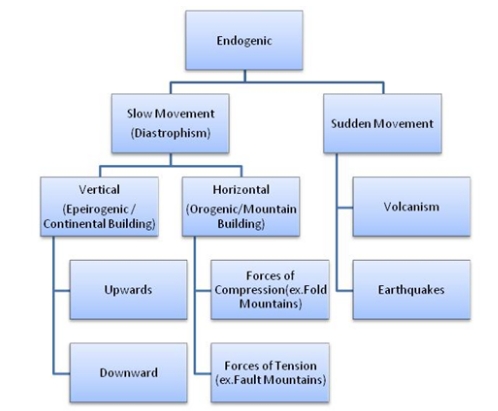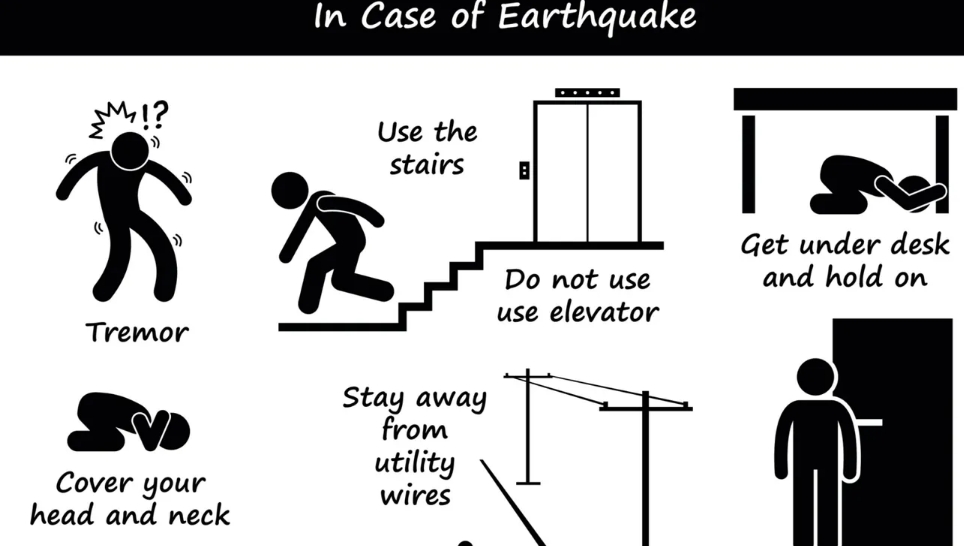
CBSE Class 7 Geography Notes Chapter 3: The third chapter of CBSE Class 7 Geography, "Our Changing Earth," discusses concepts such as a volcano, focus, epicenter, and how earthquakes occur. It also helps students comprehend how force affects the earth's movements. It also covers ideas like wind, ice, rivers, and sea waves.
As was already indicated, mastery of all these ideas is necessary to perform well on the geography exam. Therefore, we have included the CBSE Class 7 Geography Notes of Chapter 3 Our Changing Earth here to assist students in getting ready for their geography exam.CBSE Class 7 Geography Notes Chapter 3 Overview
Geography, CBSE Class 7 The chapter "Our Changing Earth" covers a variety of topics, including how the Earth moves and changes over time, how key landforms form, and more. We offer free review notes for Class 7 Geography: Our Changing Earth in PDF format so that students can quickly understand all these crucial ideas. These notes have been prepared by our experts. The revision notes contain all of the chapter's key points, which makes it simple and quick for students to review the chapter's key ideas in one location before their test. Students in class 7 can obtain a free PDF version of our Changing Earth revision notes by clicking the link provided on this page.CBSE Class 7 Geography Notes Chapter 3 PDF
Here we have provided CBSE Class 7 Geography Notes Chapter 3 for the ease of students so that they can just download the pdf and use it easily without the internet. These CBSE Class 7 Geography Notes Chapter 3 will help students understand the chapter better.CBSE Class 7 Geography Notes Chapter 3 PDF
CBSE Class 7 Geography Notes Chapter 3
Below we have provided CBSE Class 7 Geography Notes chapter 3 for the ease of students so that they can prepare better for their upcoming exams. The earth's crust is made up of several large and small, unyielding, irregularly shaped plates called lithospheric plates that support continents and the ocean floor. Because of the flow of the molten lava inside the earth, these plates shift only a few millimeters each year.Lithospheric Plates
The lithosphere is divided into several plates referred to as the lithospheric plates. Because of the flow of the molten lava inside the earth, these plates move very slowly. The earth's molten magma flows in a circular pattern. The earth's surface changes as a result of these plates moving. The forces causing the movements of the Earth are used to categorize them. We refer to these forces as exogenic and endogenic forces, respectively.Endogenic Forces
Endogenic forces: These are the forces that operate within the earth's interior. Endogenic pressures can cause abrupt movements or gradual movements depending on the situation. Across the earth's surface, abrupt movements like earthquakes and volcanoes inflict massive destruction.
Exogenic forces: These are the forces that operate on the earth's outside.
Volcano: A volcano is a sudden outburst of molten material via a vent in the crust of the earth. Earthquake: Vibrations on the earth's surface originate from the movement of the lithospheric plates and spread throughout the planet. We refer to these oscillations as earthquakes. Focus: The focal point is the location in the crust where the movement begins. Epicentre: The epicenter is the location on the surface that is above the focus. Wave-like vibrations emanate from the core and spread outward. The epicenter is typically the location of the most damage, with the earthquake's strength decreasing as it moves away from it. People often use animal activity to forecast earthquakes in their area; for example, when fish in ponds become agitated, snakes will surface.Earthquake Preparedness

Prepare an Emergency Kit: Put together a basic emergency kit that includes water, non-perishable food, a flashlight, a first aid kit, extra batteries, and any necessary medications. Keep this kit in an easily accessible location.
Secure Heavy Items: Secure heavy furniture, appliances, and other items that could fall or cause injury during an earthquake. Use wall brackets, straps, or braces to secure these items to walls or floors.
Identify Safe Spots: Identify safe spots in each room of your home, such as under sturdy tables or desks, and away from windows, mirrors, and heavy objects that could fall.
Practice Drills: Regularly practice earthquake drills with your family or household members to ensure everyone knows what to do in case of an earthquake.
Major Landforms
Weathering and erosion are two processes that constantly erode the landscape. The breaking apart of the rocks on the surface of the earth is known as weathering. Erosion: Erosion is the process by which various elements such as water, wind, and ice erode down the landscape. Water, wind, etc. eventually carries the eroded debris away or transports it before depositing it. There are several landforms on the earth's surface as a result of erosion and deposition.Work of a River
Waterfall: A waterfall is created when a river tumbles at a sharp angle over extremely hard rocks or down a steep valley side. Meanders: The river makes big curves known as meanders as it enters the plain by twisting and turning. Cut-off Lake: The ends of the meander loop get closer and closer as a result of ongoing erosion and deposition along the meander's sides. Over time, the meander loop separates from the river to create an oxbow lake, also known as a cut-off lake. Floodplain: The river deposits layers of fine dirt and other materials along its banks during flooding, which is known as sedimentation. A level, productive floodplain is created as a result of this. Levees are the elevated banks. Distributaries: As a river gets closer to the sea, its water flow slows down and it splits up into several smaller streams known as distributaries. Delta: The river slows down to the point where it starts to deposit its cargo. Every distributary creates its oral cavity. A delta is created when sediments from every mouth combine to form one.Work of Sea Waves
Sea caves: As a result of the sea waves' constant pounding on the rocks, tiny fissures in the rocks are created by erosion and deposition. Caves that resemble hollows are created on the rocks as a result of the fractures growing bigger and wider over time. We refer to them as sea caves. Sea Arches: These caverns create sea arches when they get so huge that the cave's roof is all that's left. Stacks: When the roof is destroyed by erosion, only wall-like structures remain. These are known as stacks. Sea cliff: A sea cliff is a steep, rocky coast that rises nearly vertically above the ocean.Work of Ice
Glaciers: Known as "rivers of ice," glaciers trample through rocks and dirt, revealing the solid rock beneath. There, vast chasms are carved out by glaciers. They fill with water as the ice melts, creating stunning lakes in the mountains. Glacial Moraines: Material carried by the glacier, including silt, sand, and small and large rocks, deposits itself to create glacial moraines.Work of wind
Wind: Wind is an active agent of deposition and erosion in desert environments. Mushroom rocks are rocks that have a mushroom-like shape found in desert regions. Sand dunes: Sand is lifted and carried from one location to another by wind. Sand falls and is deposited in low, hill-like structures after the blowing stops. We refer to these as sand dunes. Loess: Sand particles that are extremely light and fine can travel great distances on wind. Loess is the term for this type of sand that forms across vast expanses.Benefits of CBSE Class 7 Geography Notes Chapter 3
With the aid of our Changing Earth review notes here, students will have no trouble grasping the chapter's ideas. It assists students in recognizing and comprehending the chapter's key points so they can review them for tests. The experts' comprehensive explanations of the chapter's most crucial subjects in these notes make it simple for the students to make revisions. You can download our Changing Earth notes for free and access them offline.CBSE Class 7 Geography Notes Chapter 3 FAQs
What happened in chapter 3 of Geography class 7?
What are the two types of the earth's forces class 7?
Are changing Earth notes?








